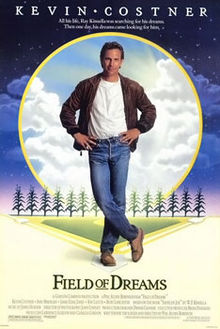 As Apple begins to flood the market with a full line of mobile devices sporting 4G LTE communications capability, starting with the iPAD and soon to follow with Ivy Bridge based MAC Book Pros and then in the Fall with iPhone 5s, one has to ask will the carriers be able to keep pace in order for customers to have a satisfied user experience. I believe there is a critical business model mismatch that will cause Apple to get deeply involved in an accelerated 4G build out and with this a potential new way of servicing its best customers.
As Apple begins to flood the market with a full line of mobile devices sporting 4G LTE communications capability, starting with the iPAD and soon to follow with Ivy Bridge based MAC Book Pros and then in the Fall with iPhone 5s, one has to ask will the carriers be able to keep pace in order for customers to have a satisfied user experience. I believe there is a critical business model mismatch that will cause Apple to get deeply involved in an accelerated 4G build out and with this a potential new way of servicing its best customers.
Apple has a business model that can be easily summarized by the theme of the movie “Field of Dreams”…. If we build it they will come. In contrast, AT&T and Verizon’s business model is one based on divided loyalties. First: “Don’t shoot until you see the whites of their eyes” because second and more important: make sure do deliver on the quarterly dividend payment.
Imagine Apple, as epitomized by Ray Kinsella, the farmer in the movie who has plowed under his corn field in order to build a baseball diamond that offers the great athletes of a bygone era to relive their past, youthful glories. Fans arrive in their cars from counties wide to enjoy what plans to be a night-time outing. Only the one thing necessary for a game to proceed is missing. The field is not bathing in stadium lights, but by the trickle of lumens emanating from the farmhouse back porch light. You see, the power company is a regulated utility that is more concerned about delivering a nice quarterly dividend on time than it is about building ahead capacity to a new customer. How many night games this summer do you expect to be playing at this field Mr. Kinsella?
The original AT&T, founded in 1885, survived nearly 100 years as a government blessed monopoly churning out a stream of continuous profits in return for guaranteed service to the last farmer residing in the hinterlands of West Texas and the Dakotas. Miles of telephone wires is something an Exec could point to an interested Congressman as a sign of good service to his constituents – no need for more regulation, please. For all the millions of customers who complained about their monthly phone bill, there was an equally vocal crowd of retired investors who counted on the quarterly dividend check to supplement their social security. AT&T was a company where time stood still. It still would be motionless except for the curious, ironic fact that in 1947 its own researchers at Bell Labs discovered the transistor and set in motion the computer industry which seeks to undermine any object (business) that remains at rest.
Don’t misunderstand me; the capital expenditure budgets of AT&T and Verizon are huge. Last year they combined for $65B of new equipment purchases off a $240B revenue base. However, both companies are loaded with debt ($120B in total) that eats up $6.4B in cash (interest expense) and when combined with $16B in dividend payouts, results in a hamstrung business model that is not likely to respond quickly to market demands. With less than a 3% expected revenue growth rate this year, it is hard for any CEO to turn the dial on more capex.
If Apple’s 4G iPAD is intended for part time users of the network, then they may get by with the planned AT&T and Verizon infrastructure improvements. However, if the average user expects to rely on 4G for much of their experience, then the risk becomes one of Apple putting their branding in the hands of a third party who may not care to step up to the plate in a responsible manner. Damaged brand experiences can lead to diminished sales and margins and Apple knows this.
In one of the most interesting passages in Walter Isaacson’s book on Steve Jobs, there was a mention that Jobs wanted to create his own WiFi network to replace the cellular networks so that Apple would have full control over all elements of the phone. In other words, Jobs was concerned about the user experience with cell phone carriers as the gate-keeper.
Given Apple’s current financial position ($100B in the bank growing $10-$15B a quarter) and continued projected double digit revenue gains in the coming year it is incumbent on them to not only guarantee a great user experience (branding experience) but to get a leg up on their competitors. It is easy to draw up a scenario where Apple combines an unlimited 4G data service experience with a closer connection to icloud that drives a monthly commitment. Essentially Apple underwrites carrier capex that is dedicated to these high data customers. The carriers transfer the data charge to Apple who buries it in the icloud bill. As for first users, think of field sales folks who expense it with corporate every month (like they already do with the monthly car allowance).
What does this all mean for semiconductors companies? Perhaps the biggest change will be in how to forecast a communications capex ramp when it goes beyond what the current carriers business models can justify. Upside is definitely possible if Apple makes the commitment to build its 4G Field of Dreams.
FULL DISCLOSURE: I am long AAPL, INTC, ALTR and QCOM









Quantum Advantage is About the Algorithm, not the Computer